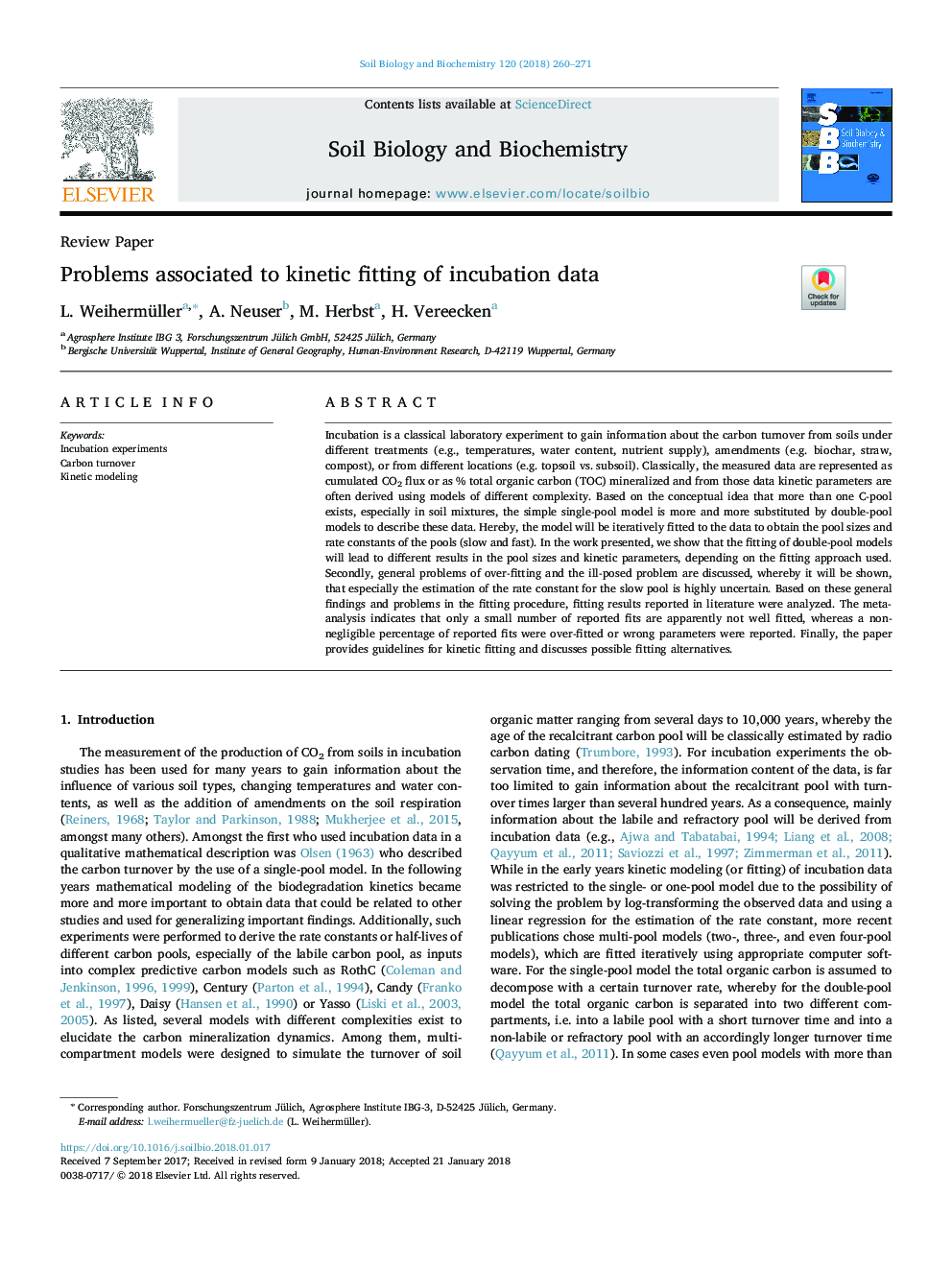| Article ID | Journal | Published Year | Pages | File Type |
|---|---|---|---|---|
| 8362855 | Soil Biology and Biochemistry | 2018 | 12 Pages |
Abstract
Incubation is a classical laboratory experiment to gain information about the carbon turnover from soils under different treatments (e.g., temperatures, water content, nutrient supply), amendments (e.g. biochar, straw, compost), or from different locations (e.g. topsoil vs. subsoil). Classically, the measured data are represented as cumulated CO2 flux or as % total organic carbon (TOC) mineralized and from those data kinetic parameters are often derived using models of different complexity. Based on the conceptual idea that more than one C-pool exists, especially in soil mixtures, the simple single-pool model is more and more substituted by double-pool models to describe these data. Hereby, the model will be iteratively fitted to the data to obtain the pool sizes and rate constants of the pools (slow and fast). In the work presented, we show that the fitting of double-pool models will lead to different results in the pool sizes and kinetic parameters, depending on the fitting approach used. Secondly, general problems of over-fitting and the ill-posed problem are discussed, whereby it will be shown, that especially the estimation of the rate constant for the slow pool is highly uncertain. Based on these general findings and problems in the fitting procedure, fitting results reported in literature were analyzed. The meta-analysis indicates that only a small number of reported fits are apparently not well fitted, whereas a non-negligible percentage of reported fits were over-fitted or wrong parameters were reported. Finally, the paper provides guidelines for kinetic fitting and discusses possible fitting alternatives.
Keywords
Related Topics
Life Sciences
Agricultural and Biological Sciences
Soil Science
Authors
L. Weihermüller, A. Neuser, M. Herbst, H. Vereecken,
